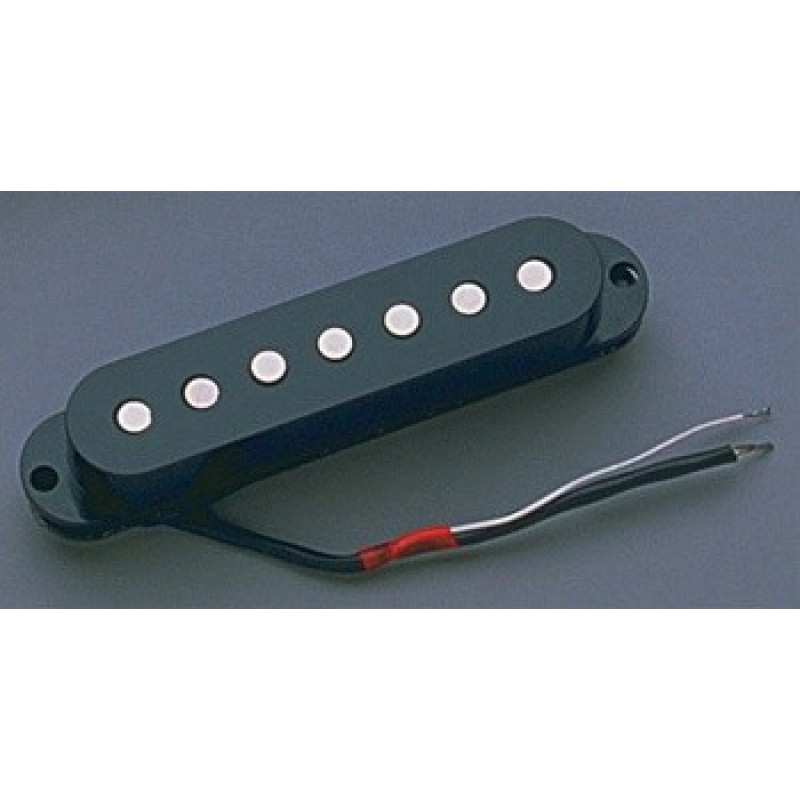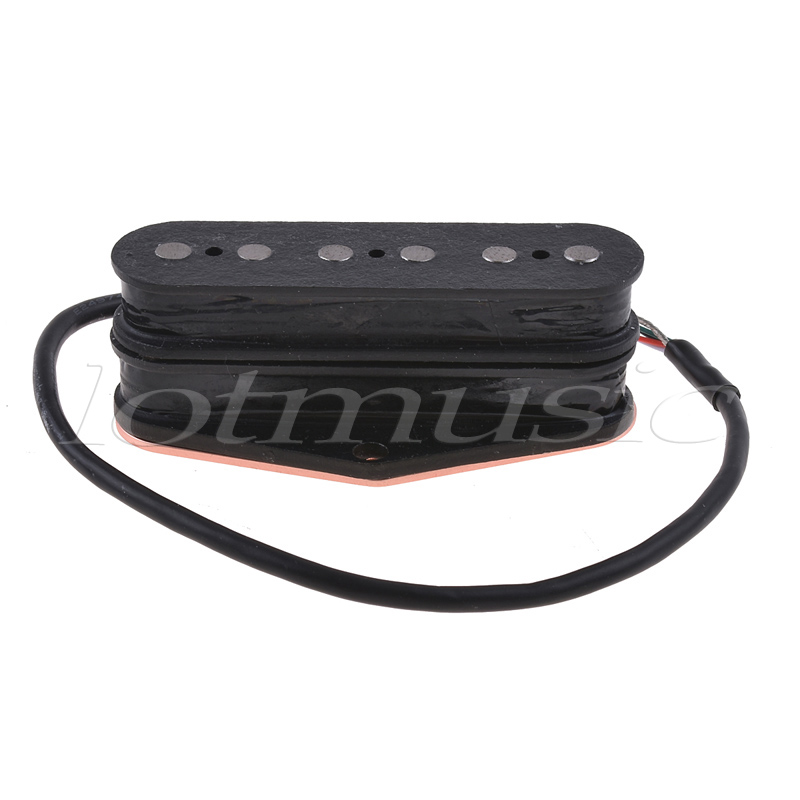
· The Ohms listed for pickups is the DC resistance only. This would depend on the gauge & length of the windings. All things being equal, which they usually aren't, more ohms = more turns = more output. Since the strength & shape of the magnets, etc. has a huge effect, the DC Ohms rating is only one of many factors affecting tone • Ohms: messure of resistance. The longer the pickup wire and more turns used, the higher the resistance. Also the higher the resistance, the louder or "hotter" the pickup. But be aware, higher resistance comes at a cost: lose of treble frequencies. This is why single coil pickups have more treble and less output than Humbucking pickups (which · Testing single-conductor pickups (all single-coils and non-splittable humbuckers) Turn on your multimeter and set it to the “Ohm” or “Ω” setting Touch one multimeter probe to either wire (Excluding the ground wire. More on that in a minute)
Top 16 Best Single-Coil Pickups On The Market Reviews
This guide will begin by looking at what is happening within the guitar itself, based on passive magnetic pickups as fitted to the majority of electric guitars. It will then move on to considering the wider picture of the guitars signal chain, cables, effects boxes amps etc. So, for example, a device that passes 0. Note; Many electrical devices have a resistance, not just resistors!
For varying signals, it usually changes with frequency, though in thinking guitar, it is more convenient to think of it as a reasonably constant figure Ohms. Capacitance is also a measure of the amount of electric potential energy stored.
Measured in Farads typically decimal fractions of, single coil pickup ohms. Measured in Henries H. So far so good, but now is where things begin to get more complicated. Because it turns out that the simple act of putting all that copper wire in a tight series of coils around a bobbin introduces some new elements to worry about, coil capacitance and inductance.
The results are illustrated in the diagram below. But the centre diagram shows a much more realistic representation of how a pickup behaves electrically. The same old 6 K Ohm resistor is still there, single coil pickup ohms its joined by an inductance element in series and a capacitance element in parallel with it the voltage source simply represents the fact that in use a guitar pickup generates a small voltage from the strings acting on the coils surrounding a magnet.
The table on the right of the diagram above illustrates real DC values recorded from Ironstone middle pickups belonging to different sets. The key thing to notice is that broadly, as resistance increases, so does inductance Lbut capacitance decreases. So what?
Simply stated, as the signal frequency increases, capacitors present less resistance to the signal, and the opposite is true for inductors. In the pickup representation then, higher frequency signals will simultaneously encounter more resistance getting to the pickups output because of the pickups inductive effect, and at the same time, single coil pickup ohms lower resistance presented by the capacitor running from the output to groundwill increasing shunt a fraction of these higher frequencies to ground.
The more coils, the higher the pickup resistance and output, but the lower the resonance point. All of this is the electrical explanation of why lower coil resistance vintage pickups sound brighter than high resistance single coils or humbuckers.
The mere act of taking the guitars volume control away from its maximum alters the electrical model shown above and begins to taper off yet more treble. What it may lack in engineering sophistication, single coil pickup ohms, it makes up for by being cheap and effective. Impedance matching So if you have followed the logic so far, its time to move on down the guitar signal chain and see what happens when things get connected together.
The single coil pickup ohms electrical model of a pickup just presented illustrates the potentially negative impact on tone that capacitance and inductance can have inside a pickup coil. So the last thing you would want to do is add more of these elements surely? Enter the guitar cable! Sadly, the humble guitar cable is a further source of capacitance around 30pf per footagain effectively operating between the guitars output and ground just like in the diagram.
Now we can return to the theme of Impedance Matching, maximizing the power transfer. It is again more about the effects that mismatching has single coil pickup ohms tonal quality that is the issue here on a very low power signal in electrical terms.
To keep things simple rimpedance in the electric guitar context in normally lumped into one of two categories; high or low where high equates to value in the order of 1M Ohm and low being K Ohms or less. So for good impedance matching, the next device in the chain be it amplifier, effects box, mixer DI etc should not be an electrical load on the low output pickups.
In other words these devices should have high input impedances themselves. Clearly any amplifier, stomp box etc that presents a lower impedance load to the poor old single coil pickup is going to be bad news in terms of signal degradation.
Forgetting all of the tonal impacts for a second, single coil pickup ohms, any reduction in the small to start with pickup signal level is going to be compensated for by someone turning up a volume control somewhere!
So are all amplifiers, stomp boxes, mixers etc built to give a healthy high impedance load to your guitar? Well sadly no! However, single coil pickup ohms desks and the like are quite often specifically designed to match to low impedance microphones and similar, single coil pickup ohms, meaning a guitar plugged in directly without some kind of DI Direct Injection box is going to suffer.
True-Bypass and effects boxes But the biggest culprit is often the humble stomp box which ideally should present a high impedance load at the front end, but can often be in the K Ohm level or lower. So plug your guitar into one of those via a nice long cable and you can see you are in big trouble tone-wise!
A true bypass switch does just that, it completely disconnects the effects input and output from the signal path allowing the signal to flow uninterrupted from the effects input to output jacks. But switching your stomp box to true bypass will remove that nice high impedance load on the pickups single coil pickup ohms replace it with a total of 9 metres of cable and its associated capacitive high frequency losses!
In this context that means an active electrical circuit as close to the pickups as possible. But even better are 'buffer' or pre-amp circuits built into the guitar itself see Ironstone's own Pre-Amp Multi Effects Unit. Originally very hobbyist in nature, these are starting to become more popular. In many respects similar to active pickups, they require a good old PP3 battery hidden under the scratchplate and are normally activated by a stereo jack socket wired to turn the pre-amp on when a jack is inserted, single coil pickup ohms.
Typically with a gain near to 1, they are not really amplifying the signal, just 'protecting' it. So the message is clear. Its well worth spending a bit of time buffering those nice new pups to preserve the best of their tone. And while you are doing it, why not take a look at the active electronics effects market to really give your guitar project a new sound!
Simple pickup modelling The easiest way to understand all this is practical examples of course. So to begin with, consider the humble single coil pickup.
their resistance measured at zero frequency e, single coil pickup ohms. Direct Current as you get from a PP3 battery. What this resistance is actually indicating is the single coil pickup ohms of several thousand windings of copper wire of a reasonably constant cross sectional area. If the resistance of say 1 metre of the wire is known, as well as the total length wound on, the final total resistance is just the multiple of the two.
Installation of any set of Stratocaster style single coil pickups is quite straightforward for anyone with some basic soldering skills. Active Electronics are not much harder with a little care and thought.
Vintage Guitars Info - Fender vintage guitar pickup specs, info

If you have the option of several ranges of resistance, choose “20 kOhms.”. Most single-coil guitar pickups have under 10 kilo-ohms of resistance, and most humbuckers (double-coil pickups) have under 20 kilo-ohms. If you have an analog meter, it is necessary to establish a zero reading · The Ohms listed for pickups is the DC resistance only. This would depend on the gauge & length of the windings. All things being equal, which they usually aren't, more ohms = more turns = more output. Since the strength & shape of the magnets, etc. has a huge effect, the DC Ohms rating is only one of many factors affecting tone · Testing single-conductor pickups (all single-coils and non-splittable humbuckers) Turn on your multimeter and set it to the “Ohm” or “Ω” setting Touch one multimeter probe to either wire (Excluding the ground wire. More on that in a minute)
Keine Kommentare:
Kommentar veröffentlichen